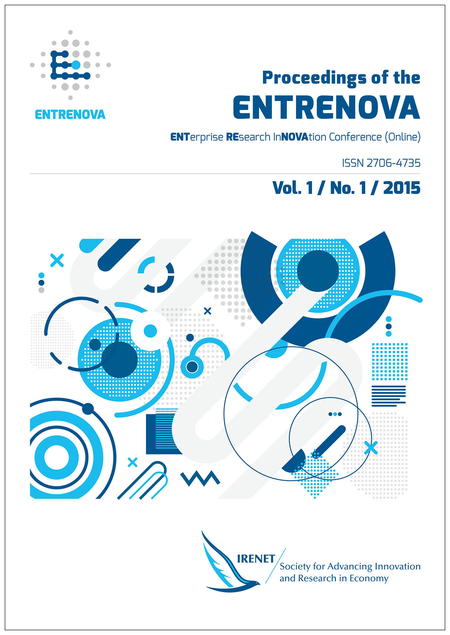Designing Mobile Application for the Over the Counter Drug Marketing
Ključne reči:
OTC drugs, mobile applications, Kano model, customer satisfaction, mobile marketingApstrakt
The increased usage of mobile apps has a great potential in Pharmacy market. Through the use of mobile apps, web portals and social media may allow a fast and wide diffusion of awareness for over the counter (OTC) drugs and attract a large number of customers, thus increasing the value of searching for information, quality and lower costs of the purchase. The goal of this paper is to identify the key factors as antecedents of customer satisfaction for the design of a mobile app for OTC drug marketing. To this aim, the authors use the Kano model that allows categorizing service attributes according to how they are perceived by customers and estimating their impact on customer satisfaction. This model is adopted in order to identify, express and latent needs of customers and to design a mobile app for OTC marketing according to their perceptions and expectations. To apply the Kano model, the authors used quantitative data collected through 537 questionnaires that were sent to the Slovenian internet users (June and August 2013). The results of this analysis can be relevant to the pharmaceutical companies; drugs vendors and marketing managers plan strategy and operational activities, for pharmaceutical companies in the field of OTC drugs marketing, for application developers, and for all those concerned with OTC drugs marketing issues.

This work is licensed under a Creative Commons Attribution-NonCommercial 4.0 International License.
Reference
Berger, C., Blauth, R., Boger, D., Bolster, C., Burchill, G., DuMouchel, W., et al. (1993), “Kano’s method for understanding customer-defined quality”, Center for Quality of Management Journal, Vol 2 No 4, pp. 3-35.
Bughin, J., Chui, M., Manyika, J. (2010), “Clouds, big data, and smart assets: Tentech-enabled business trends to watch”, McKinsey Quarterly, Vol 56 No1, pp. 75-86.
Dilman, I. (1999) “Free Will: An Historical and Philosophical Introduction”, Psychology Press.
Dominici, G. and Palumbo, F. (2013), “How to build an e-learning product: Factors forstudent/customer satisfaction”, Business Horizons, Vol. 56 No. 1, pp. 87-96.
Ennew, T.C., Binks, R.M. and Chiplin, B. (2015), “Customer satisfaction and customer retention: an examination of small business and their banks in the UK”, in Wilson, J.E. and Black,C.W. (Ed.), Proceedings of the 1994 Academy of Marketing Science (AMS) Annual Conference, Springer International Publishing, Berlin, pp. 182-199.
Fornell, C. Johnson, D.M., Anderson, E.W., Cha, J. and Bryant, E.B. (1996), “The American Customer Satisfaction Index: Nature, Purpose, and Findings’’, Journal of Marketing, Vol. 60, pp. 7-18.
Homburg, C., Wieseke, J. and Hoyer, D.W. (2009), ‘‘Social Identity and the Service-Profit Chain,’’ Journal of Marketing, Vol. 73, pp. 38-54.
Kano N., Seraku NK., Takahashi F., Tsuji S. (1984), “Attractive quality and must be quality”, The Journal of the Japanese Society for Control Quality, Vol.14, pp. 39-48.
Mikulic, J., Prebezac, D. (2011),“A critical review of techniques for classifying quality attributes in the Kano model”, Managing Service Quality: An International Journal, Vol 2 No1, pp 46-66.
Roblek, V., Bertoncelj, A. (2014), “Impact of corporate social responsibility on OTC medicines consumers”, The Amfiteatru Economic, Vol. 35 No16, pp. 12-35.
Roblek, V. (2015), “Impact of Internet and social media on organizational change of OTC medicines marketing management”, International Journal of Electronic Marketing and Retailing, Vol. 7 No 1, forthcoming.
Sauerwein, E., Bailom, F., Matzler, K., Hinterhuber, H.H. (1996), ”The Kano model: how to delight your customers”, Preprints Volume I of the IX. International Working Seminar on Production Economics, Innsbruck/Igls/Austria, February, pp. 19-23.

